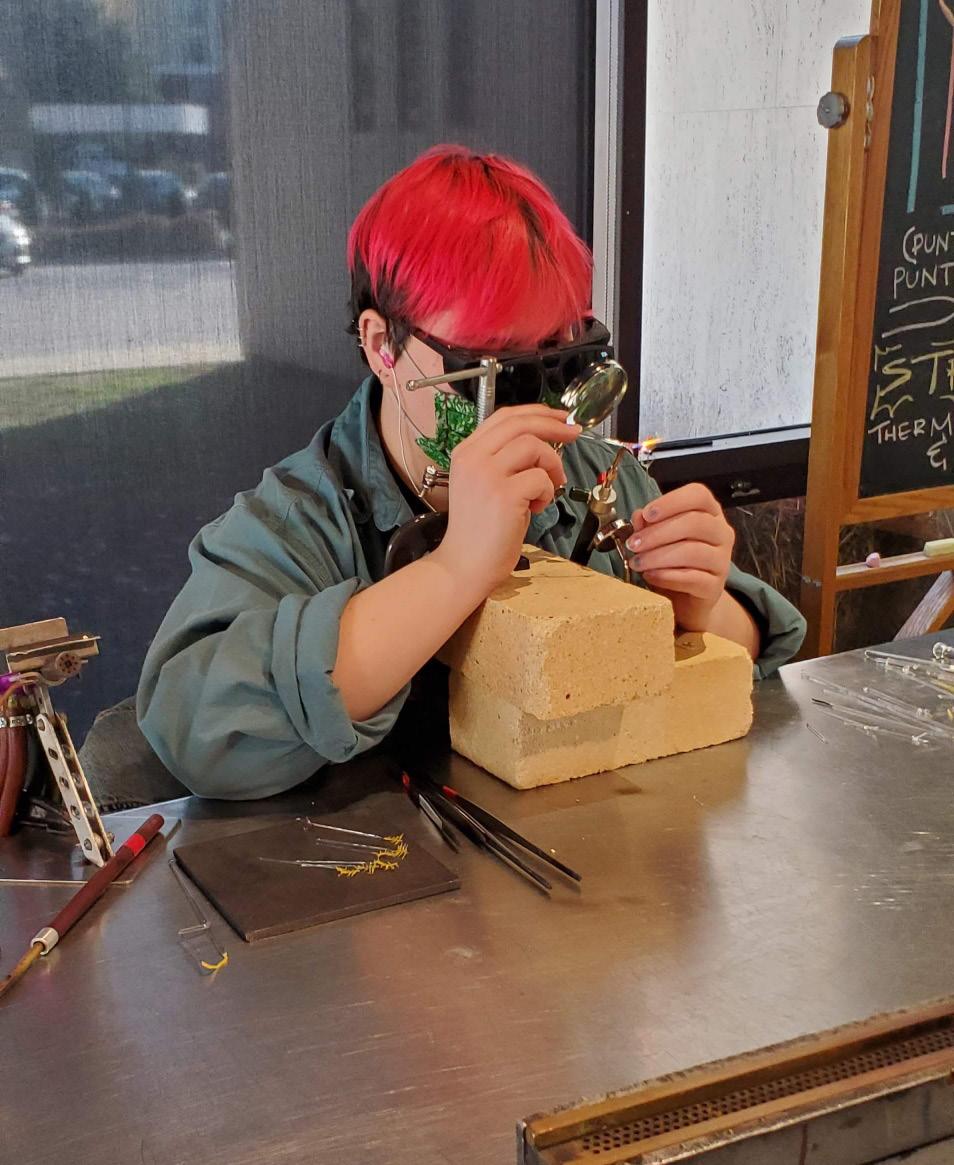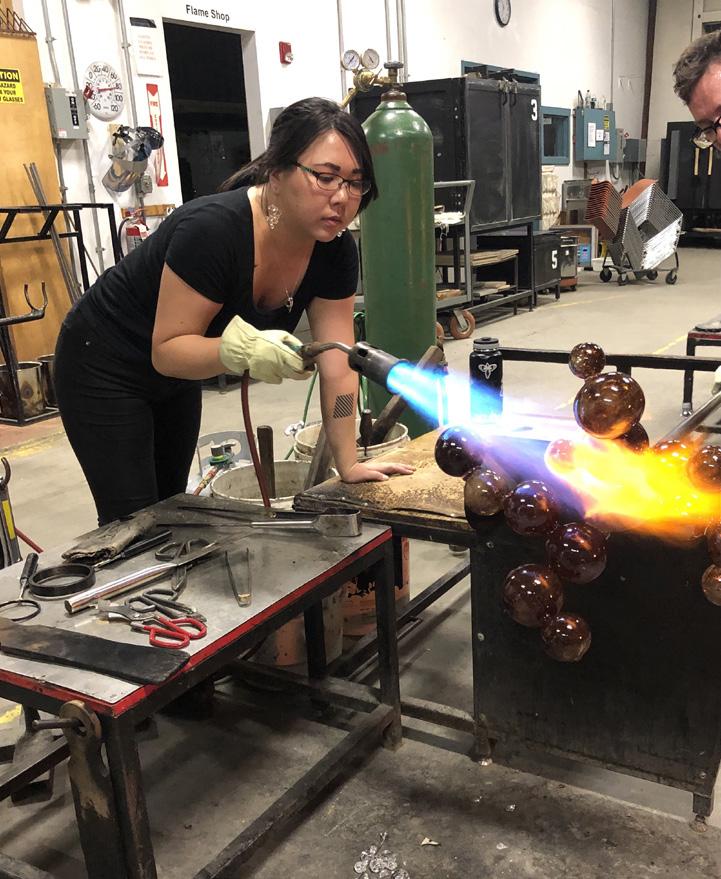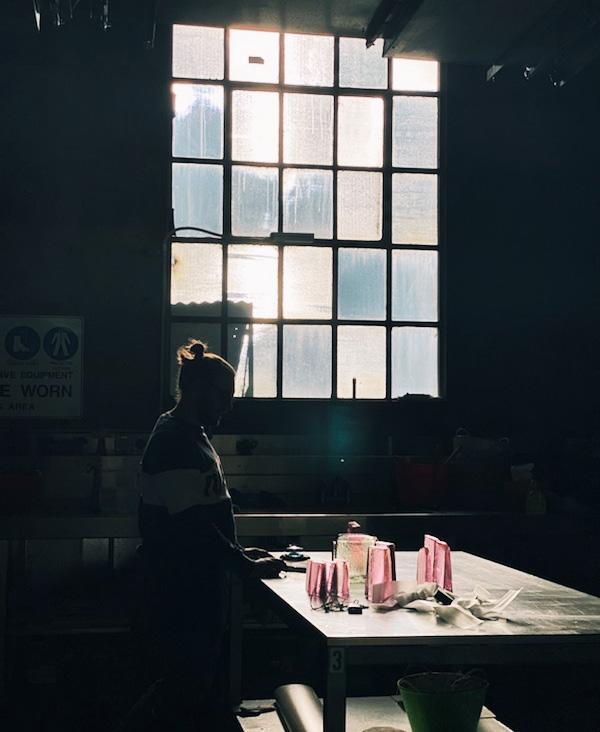
6 minute read
Student Center
SPOTLIGHT
Post Graduate Preparedness by Paige Morris
The path from student to art practitioner is paved with uncertainty. It is no surprise that seeking a degree in the arts may often feel like a precarious choice, especially once the degree is in hand and the bills need to be paid. With this in mind, I believe it is critically important to convey the transition from student to working artist with honesty and transparency. The delicate balancing act between working-for-pay and carving out studio time must be carefully communicated to students. While there is no direct route for those who choose a career in the arts it is apparent that in order to sustain and maintain our love for making we must be able and willing to adapt to our surroundings. In anticipation of the GAS Conference and the first ever Student Panel: POST GRADUATE PREPAREDNESS, I asked three individuals to offer some insight regarding their current status as emerging artists in the field. To accompany these particular narratives, 31 individuals from North America and Europe responded to a survey regarding professional practice pedagogy in glass academia. It may be a radical idea but I firmly believe students should not only receive professional mentorship through their academic program, but that they should play a key role in developing the curriculum and pedagogy of said classes. I hope that by giving students a platform via GASnews, those of us who identify as educators will consider how we hold space for the minds we are molding.
Pat Langley (they/them)
GASnews: Can you speak on the postgraduation uncertainty of the “real world” and what it was like to adapt a personal studio practice after receiving intense instruction and oversight from the university/college setting?
Pat Langley: Maintaining a studio practice in the “real world” is based mostly on determination. You have to want it. You have to be willing to fight, flex, and rework ideas and spaces to fit your momentary and long-term needs. Navigating funds, space, and accessibility to equipment can feel like being a sheep trapped in a maze made by wolves. My biggest challenge when starting the adoption of my studio practice post undergrad was figuring out how to motivate myself. Once I got past that, funding was the next biggest challenge.
Abegael Uffelman: The post-grad uncertainty can definitely be daunting, especially when approaching the final semeter before graduation. One of the hardest parts for me was deciding what I wanted to do upon graduating. For the first time, there wasn’t a clear cut path. There was freedom and I had to really sit down and figure out what direction I wanted to go in. I knew I wanted to continue learning and making work, while gaining experience in a studio, so I applied to and was accepted into Chrysler Glass Studio’s assistantship program. At the time, this was an unpaid assistantship, so I had to get another job.

Abegael Uffelman (she/her) Louis Grant (he/him)

Balancing studio work, working to pay rent, making your own work, and being involved with the community is the most difficult part of being an artist. Sometimes some areas begin to grow and some areas start lacking and that is the real world. Nobody will look over your shoulder to make sure you’re still making your work, but that also doesn’t mean people aren’t there to help. During my time at Chrysler, my studio practice began lacking, but my networking and forming lasting relationships with other artists grew exponentially - and that’s something school can’t always teach you, but it is extremely important to being a working artist.
Louis Grant: Since graduating I have worked as a research and studio assistant for Mel Douglas as she completed a PhD. I have worked in marketing in local arts organizations and now local retail. Currently, I am studying online for a Marketing Management Graduate Certificate. All while still participating in exhibitions and prizes.
GASnews: Did you receive any mentorship or insight from processors during and/or after your schooling that informed any decisions you may have made when applying for or choosing to attend various opportunities or programs?
PL: I went to a school with no major glass program and only one glass elective ran every spring semester, so to work with glass was mostly self-driven and fueled. I did have an adjunct professor, Christen Baker, who encouraged me to pursue my beloved material and awarded me a scholarship to Pilchuck Glass School my senior year, which ultimately gave me a foot in the door of the glass world. After undergrad I found guidance elsewhere in my peers, such as Jon Bolivar and Heather Sutherland. I watched what other glass blowers were doing, listened to the opportunities floating around in my liminal space, and took risks when necessary. My path to this point was not straight by any means, and I was thrown through several loops along the way.
AU: Absolutely, my professors were amazing and helped out during my last semester at school. I learned about Chrysler’s assistantship program from Amber Cowan, who, at the time, had recently been a visiting artist there. Jes Julius was my graduating semester glass professor and helped immensely with the transition from student to working artist. She has sent me opportunities after graduating and has given me advice on what paths to pursue. Also, Sharyn O’Mara, who was the head of Tyler’s glass program when I was in school, recommended so many opportunities and grant applications to apply to. Those experiences have helped so much with understanding what to pursue now that I'm not in that educational environment. The adjunct professors had also been crucial for my development. My professors gave way more than they had to give to their students and I am so grateful to them. I honestly just wish Temple University (and universities in general) would pay their professors what they are worth.
LG: Luckily, I have worked for Dr. Mel Douglas since my third year in my Bachelor of Visual Arts. I have been educated by, worked with, and been mentored by Mel throughout the phases of my degree and career. Thanks to the encouragement of Mel, I have also attended Pilchuck as a student and a TA, and UrbanGlass as a student. GASnews: What has been the most integral tool for motivating your personal studio practice?
PL: The most integral tool to motivating my studio practice is passion. I am extremely passionate about art, arts education, and community. I let it drive me. When I first started my studio practice outside of academia, I found it very helpful to use motivational tools such as vision boards and goal/reward systems.
AU: When I was in school, Jes Julius, asked “why do we do this to ourselves?” She was acknowledging the difficulty of being a working artist - the hours poured in, the lack of sleep, hustling to make deadlines, etc. She answered it by saying “because we have to”. It’s really as simple as that. If you don’t have that part of you that needs to keep making art, you’re not going to have enough momentum or passion to sustain a meaningful practice. I have this itch that I feel if I go too long without pursuing an idea. It’s a literal bodily feeling of (discomfort) until I start working again. Sometimes I research topics for a long time, but other times I have an idea pop into my head at a random time and I just have to start working on it. I can’t imagine this not being my life. I also get a rush whenever I see other artists’ work I admire. Going to museums, or with this year’s circumstances, virtually watching artist’s talks/shows is one of the best ways to inspire creation. There’s so many incredible artists and I really just want to be one of them.
LG: Mostly it is deadlines, trying to make work or submit it for a specific exhibition or prize. I have found it difficult to focus and spend extended time on my practice as I am usually so busy with work, working for others or just life. There never seems to be enough time in

